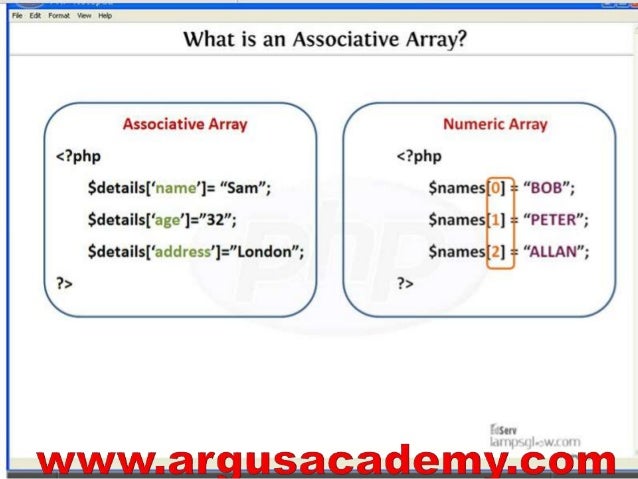
My test system is a Lenovo X1 Carbon 2017 Edition, i5-7300U CPU 2.60GHz, 16 GB of RAM, running Kubuntu 18.04. So like any good scientist I decided to test it: What I found will shock you! Benchmark environment (Fight me!) But really, who bothers with defining a class for something that simple?īut that got me wondering, is that common pattern really, you know, good? Are objects actually more expensive or harder to work with than arrays? Or, more to the point, is that true today on PHP 7 given all the optimizations that have happened over the years compared with the bad old days of PHP 4? Maybe you document it in a docblock, or maybe you're a lazy jerk and you don't.

This is a pretty common pattern in PHP: You have some simple one-off internal data structure so you make an informal struct using PHP associative arrays.
PHP ASSOCIATIVE ARRAY FORMS CODE
Hence storing two different information in one array element.The other day I was working on some sample code to test out an idea that involved an object with an internal nested array.

To know the syntax and basic usage of for and foreach loop, you can refer to the PHP for and foreach loop tutorial. We can traverse an associative array either using a for loop or foreach. Traversing an array means to iterate it starting from the first index till the last element of the array. Hence, to access an associative array, we have to use the array name along with the index of the element in square brackets, the only difference here is that the index will be a string not a numeric value like in indexed array. No matter how we initialize the array, we can access the array as follows,


Syntax for the 1st way to create associative array: "Urus", "sports"=>"Huracan", "coupe"=>"Aventador") Īnd the syntax for the 2nd way to create associative array is: Just like indexed array, there are two different ways of creating an associative array in PHP, they are, An associative array is similar to an indexed array, but rather than storing data sequentially with numeric index, every value can be assigned with a user-designed key of string type.


 0 kommentar(er)
0 kommentar(er)
